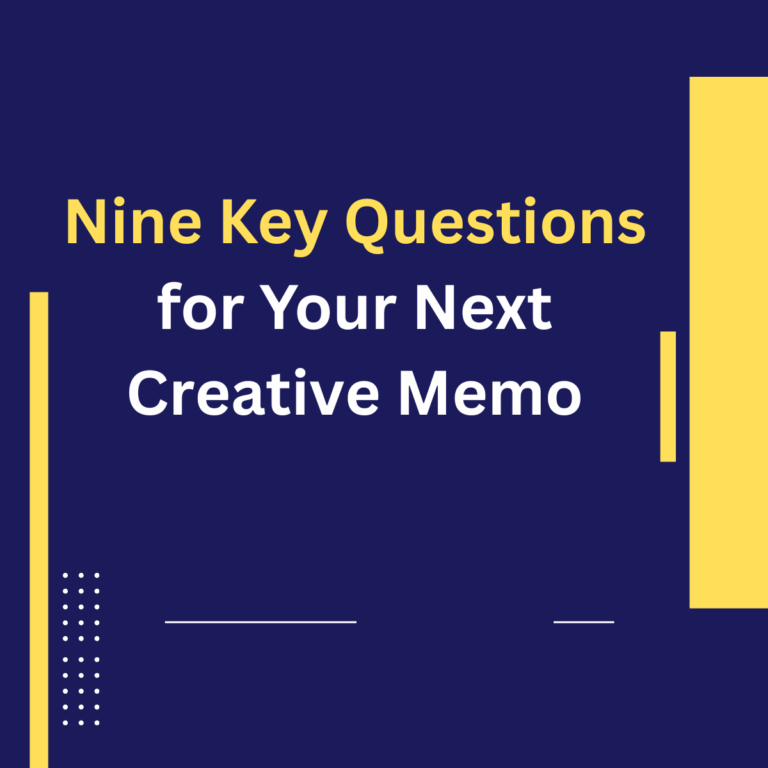CASE STUDY: Can AI Help Sharpen Our Message?
When I write, edit and revise a draft message, I get kind of wedded to it. That makes it hard to go back and try a completely new take – or to alter the way the message is voiced in any fundamental way.
In an agency setting, I had the freedom to get two or three other writers involved. But that’s not an option for many content creators. So can AI play a role here? Let’s examine that question using a central topic of the moment – efforts to blame “threat to democracy” rhetoric for the Trump assassination attempt– as a case study. Here’s the step-by-step process I used with ChatGPT.

We need a starting point. So I quickly created the following as an intentionally basic first draft. As the draft notes, while many leaders have sincerely called for a “lowering of the temperature” in political rhetoric, some have tried to blame “threat to democracy” language for the attempt on the former president’s life. Side note: One could, of course, just write a prompt and ask ChatGPT to create the first draft. But I’ve found AI more helpful as a rewrite tool. (NOTE: I’ve added paragraph breaks for ease of reading.)
The tragic and deeply disturbing attempt on former President Trump’s life has shaken our nation. Sincere politicians on both sides of the upcoming elections have rightly called for a lowering of the temperature in our highly polarized nation. It’s a call we must all heed. But some MAGA politicians are doing something more cynical.
They are promoting the false claim that Democrats arguing Donald Trump is “a threat to democracy” somehow led to the attempt on his life. It’s an effort to react to what happened in Pennsylvania last weekend not by bringing our country together, but by silencing a powerful and well-founded argument they know is a compelling one to many American voters. We must recognize this cynical ploy for what it is.

Our goal here is to persuade people, so this prompt asks for a version with “more persuasive language.” The results:
The recent alarming attempt on former President Trump’s life has deeply shaken our nation to its core. Honest leaders from both sides of the upcoming elections have rightly called for a reduction in the heated rhetoric that divides our country. This is a call we must all take seriously.
However, certain politicians aligned with the MAGA movement are engaging in a more insidious tactic. They are pushing a false narrative that Democrats’ criticism of Donald Trump as “a threat to democracy” somehow provoked the attempt on his life.
This is not an attempt to unite our nation in the face of tragedy, but rather a calculated maneuver to stifle a potent and well-supported argument that resonates with many American voters. We must see through this cynical strategy for what it truly is.
Reactions: This version includes stronger phrasing compared to the basically written baseline. “Sincere politicians” become “Honest leaders.” “Lowering the temperature in our highly polarized nation” is revised to “a reduction in the heated rhetoric that divides our nation.”
“Silencing a powerful and well-founded argument” is rephrased to “a calculated maneuver to stifle a potent and well-supported argument.”
If stopping here, I’d probably mostly adopt the “more persuasive” version. The “more persuasive prompt” produces some nice edits. It’s better but not a breakthrough. So let’s keep searching.

If you’ve read my Monday memos, you know I tend to harp on the need for making an emotional connection. So what happens if we take the starting point version and ask for “more emotional language.”
The heartbreaking and deeply unsettling attempt on former President Trump’s life has sent shockwaves through our nation. Genuine leaders from all political backgrounds, with the upcoming elections looming, have rightly urged for a calming of tensions in our fiercely divided country. This is a plea that every one of us must take to heart.
Yet, certain MAGA politicians are resorting to something far more cynical. They are pushing the false narrative that Democrats’ concerns about Donald Trump being “a threat to democracy” somehow provoked the attempt on his life. This is not an effort to unite our nation in the wake of the tragedy in Pennsylvania last weekend; rather, it is a calculated move to silence a potent and well-supported argument that resonates deeply with many American voters. We must see through this manipulative tactic for what it truly is.
Reactions: Now we’re getting somewhere. This version has a very different feel than either the starting point message or the “more persuasive” one. The “tragic and deeply disturbing” attempt on Trump’s life becomes a “heartbreaking and deeply unsettling” one. Instead of reporting it has “shaken our nation” the emotional version notes that it has “sent shockwaves through our nation.”
The seeming oxymoron “sincere politicians” of the baseline draft become “honest leaders” in the emotional one. And instead of calling for “a lowering of the temperature in our highly polarized nation,” they have “rightly urged for a calming of tensions in our fiercely divided country.”
Instead of being “a call we all must heed,” the leader’s message is “a plea that every one of us must take to heart.” The emotional version is filled with words like “heartbreaking,” “shockwaves,” “calculated move,” and “manipulative tactic.”
If I were stopping here, where I would go might depend on the audience. I’d lean more towards the emotional one for low dollar audiences and towards a mix of the emotional and persuasive one for mid level and major donors.
But wait, there’s one more version to explore.

We know that, generally speaking, our messages work best when presented in a casual, conversational style. So what happens when we prompt ChatGPT to move in that direction.
The recent attempt on former President Trump’s life has really shaken up our nation. Politicians from both sides gearing up for the upcoming elections have rightly called for us to calm down in this highly polarized time. It’s a message we all need to take seriously. But some MAGA politicians are being more than just critical.
They’re pushing this false idea that Democrats who say Donald Trump “threatens democracy” somehow caused the attempt on his life. It’s a way to respond to what happened in Pennsylvania last weekend not by uniting us, but by trying to shut down a strong and valid argument that resonates with many American voters. We need to see through this strategy for what it really is: a cynical move.
Reactions: As you can see, this version does have a much more casual, conversational style. In many situations, that’s great. For example, something I wrote recently about Project 2025 uses conversational terms like “a whopping 887-page blueprint” that is “really rattling folks across America” with Trump trying to “wash his hands of the whole thing.”
But the match between context and tone matters. And this post-assassination attempt message calls for a clear but thoughtful tone. So, for the current purpose, the more casual conversational tone may not fit what we need in this moment. In this particular case, I might shy away from it in general while stealing a phrase or two like “trying to shut down a strong and valid argument.”
The Shifts in Language Across Versions
It’s instructive to look at how certain words and phrases change across the four versions. These are charted out below:


#1: Developing your strongest possible content before turning to AI is usually the best way to start.
I began this case study with a very quick, basic draft. In actual execution, I highly recommend using all your skill to put together your opening draft. Then turn to AI for possible alternative ideas. That’s the best path to a strong final product.
#2: One way AI can be helpful in content creation is quickly demonstrating multiple ways to voice your message.
As this example has hopefully demonstrated, prompting AI to rewrite your message in different modes can quickly generate some strong ideas. The “more emotional language” and the “more conversational language” prompts are usually my favorites. But, as pointed out above, “more conversational” one is a bit of the mismatch in this case. The third prompt I often use is “more concise language.” It usually comes up with a combination of useful edits you can adopt and cuts of essential content you need to ignore.
#3: There are several different directions to go in once those multiple versions are in hand.You could simply choose what you think is the best version and let it rip. Or you could test a couple of executions against each other. Usually, I find the best course is not to pick a single option, but to choose one as the foundation and draw the strongest elements from others into a cohesive hybrid version.
#4: Audience is a critical factor in choosing the best approach.
It’s a mistake to be too fixed in matching ways of expressing your message to fit different audiences. That said, in broad terms, it’s true that lower dollar audiences respond best to immediate, emotional content. Mid-level audiences require the layering in of more long-range and strategic perspectives. And major donors are best approached with recognition of their interest in having a demonstrable personal impact.
Each of those perspectives will call for different framing and language choices. So no one execution is likely to work across the board.
#5: The proof is in the pudding. Test, test, test.We’ve all learned from hard experience that our personal radars are fallible when predicting what will and won’t connect with our audiences. That’s why we test.
But there’s one kind of testing I recommend against. Don’t set up human-written versus AI-generated tests. Don’t think of AI as a competitor, but rather as a time-saving, idea-generating tool you can collaborate with.
Conclusion
Thanks for reading. I hope you will find helpful this method of using AI as an editor/suggestion box. And I encourage you to take a minute to share your own experiences with AI content creation in the comments section.









